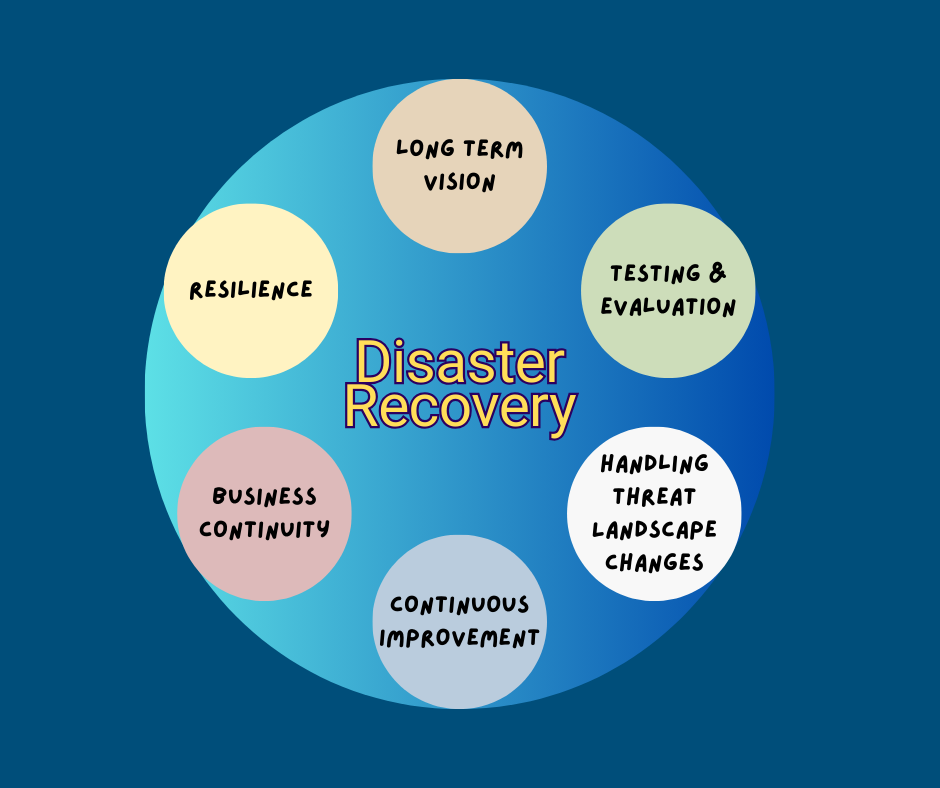About fifteen years ago, disaster recovery projects looked very different from what they are today. Back then, most of our work centered on setting up redundant hardware in secondary data centers, running cables for network redundancy, designing storage failover systems, and shipping physical backup tapes to offsite locations. The emphasis was largely on building and hardening the infrastructure layer first, both for high availability and disaster recovery.
Fast forward to today, and the landscape has transformed. With the rise of public cloud primitives—and the many managed services built on top of them—the tactical execution of disaster recovery has become more agile, scalable, and software-driven. Yet, despite these technological shifts, the strategic essence of disaster recovery has not changed. At its core, disaster recovery is about ensuring continuity, preserving trust, and enabling organizations to withstand and recover from disruption.
Disaster recovery is not a one-time checkbox to tick off and forget. It is an ongoing journey that forms a critical pillar of the broader business continuity strategy. The real measure of success lies not just in having a plan but in continuously evolving it, testing it, and aligning it with the organization’s long-term vision.

Why Long-Term Vision Matters
The foundation of any disaster recovery strategy is a long-term vision. While the immediate focus often falls on technical recovery plans and RTO/RPO metrics, it’s important to step back and connect disaster recovery to the organization’s larger mission.
Instead of seeing DR as a “backup plan,” organizations must view it as an enabler of resilience and trust. A long-term vision ensures disaster recovery is not a fragmented, reactive exercise but an evolving framework that grows with the business and strengthens its ability to thrive in the face of disruption.
Testing and Evaluation Should Never Stop
Disaster recovery plans that sit on a shelf, untouched after their creation, provide little value. The only way to ensure effectiveness is through continuous testing and evaluation. This includes:
- Scheduled DR drills that mimic real-world outages.
- Tabletop exercises to walk through decision-making in critical moments.
- Post-mortem reviews of incidents to refine processes and identify blind spots.
Testing is not about proving perfection; it’s about uncovering gaps and building confidence in the team’s ability to execute under pressure. Each test is another milestone in the journey.
Staying Ahead of a Changing Threat Landscape
Fifteen years ago, the primary concerns revolved around hardware failures, natural disasters, and accidental data loss. Today, the threat landscape has expanded significantly:
- Cyberattacks and ransomware.
- Supply chain disruptions.
- Cloud service outages.
- Regional social changes like unrests and wars.
- Global-scale events like pandemics.
A modern DR strategy must continuously adapt. This means reevaluating risks, refreshing playbooks, and embracing flexible, cloud-native architectures that can withstand these evolving threats. Staying ahead of the curve is part of keeping the journey relevant.
The Case for Continuous Improvement
Just like software development embraces continuous integration and deployment, disaster recovery should embrace continuous improvement. Each incident, drill, or market change provides new learnings. Organizations that embed feedback loops into their DR strategy ensure that the system never stagnates.
This is not just about tweaking runbooks—it also involves rethinking dependencies, re-prioritizing workloads, and identifying new single points of failure. Continuous improvement transforms DR from a static policy to a living, evolving practice.
Disaster Recovery as Part of Business Continuity
Disaster recovery cannot exist in a silo. It is one component of a broader Business Continuity (BC) strategy. While DR focuses on restoring IT systems and data, business continuity looks at sustaining critical business processes, customer communication, and workforce productivity.
A resilient organization integrates DR into its BC framework so that both technology and operations can recover in harmony. This alignment ensures that recovering systems isn’t the end goal—resuming service delivery is.
Resilience: Looking Beyond Disaster Recovery
Ultimately, disaster recovery feeds into a broader vision of resilience. Resilience extends beyond IT to include:
- Organizational resilience (leadership readiness, workforce adaptability).
- Operational resilience (supply chains, partners, third-party dependencies).
- Customer resilience (maintaining service availability and trust).
By expanding the scope, organizations shift from a purely technical mindset to a holistic resilience mindset—where disaster recovery is one important milestone on the journey, not the destination.
Closing Thoughts on Disaster Recovery
Disaster recovery is not just about preparing for rare, catastrophic events—it’s about building the confidence that your organization can withstand, recover, and continue to operate no matter what comes its way. The tools and tactics have certainly evolved—from physical data centers to cloud-native platforms—but the philosophy remains the same: resilience is earned through preparation, adaptability, and constant improvement.
When viewed as a journey, disaster recovery becomes more than a technical safeguard. It becomes a driver of trust with customers, a reinforcement of operational stability, and a foundation for long-term business growth. The journey never truly ends, but with each milestone—whether it’s refining recovery plans, conducting new drills, or expanding resilience strategies—organizations become stronger, more agile, and better equipped to face the unknown.